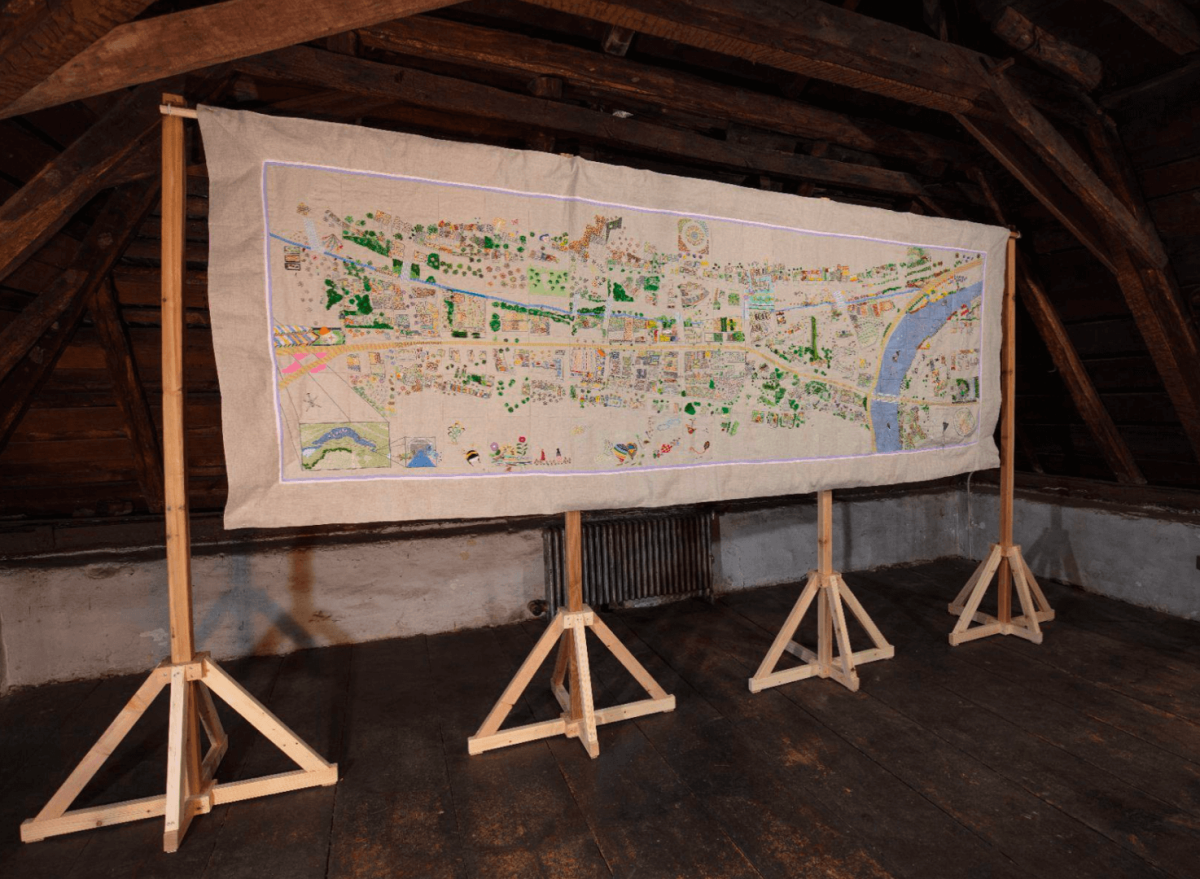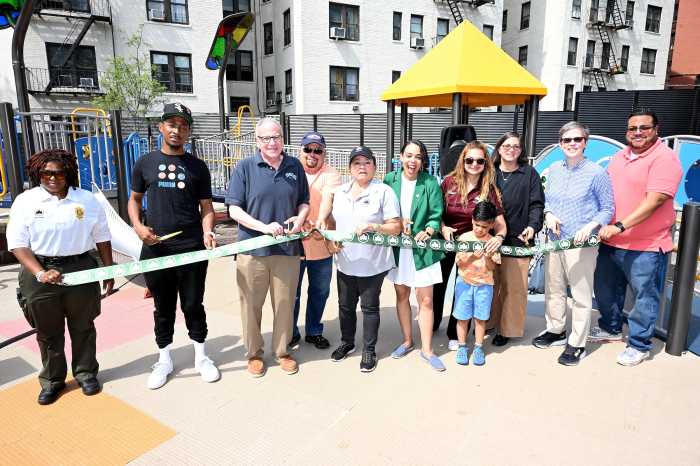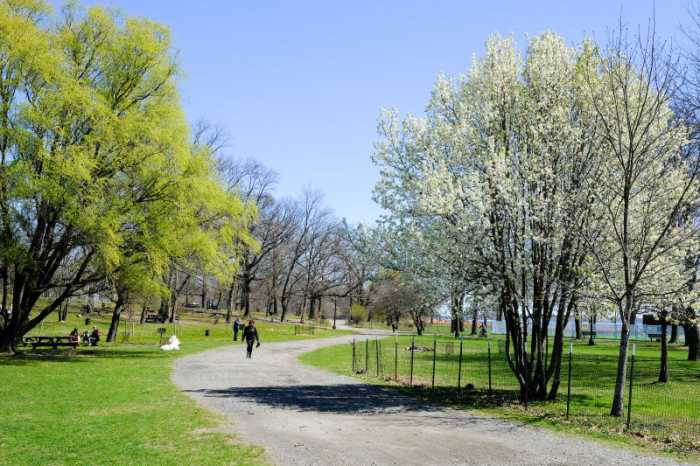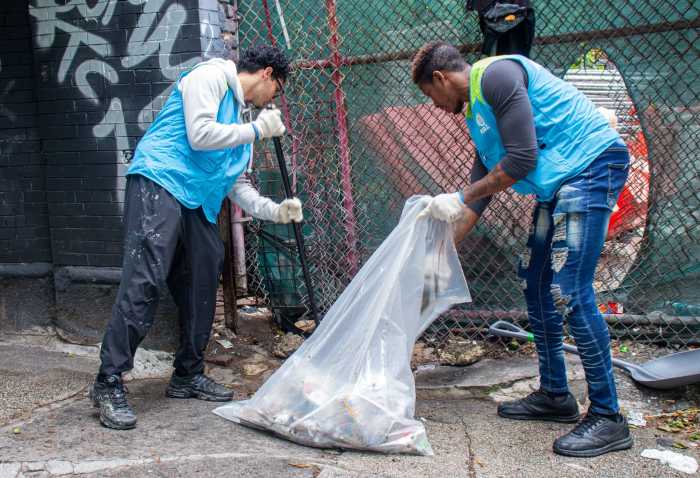Accompanied by other historical quilts, the installation creates a dialogue between the borough’s past, present and future. Matthew López-Jensen is a Bronx-based interdisciplinary artist whose practice combines photography, video, walking and mapping to explore the many social, historical and ecological layers of landscapes. He currently teaches fine arts and photography at Parsons School of Design and Fordham University.
Ana de la Cueva’s work encompasses embroidery, ceramics, photography, video, printmaking, painting and sculpture. She employs these media to question issues regarding territories, history, gender, identity and tradition. She is based in New York City and Guadalajara.
Over the course of two years de la Cueva and López-Jensen held numerous in-person and online workshops to teach volunteers how to do the specific stitches they had chosen to represent the plants which are most adaptable to green roofs and urban streetscapes. They created 15 instructional videos on how to stitch representations of resilient plants, such as Purple Love Grass, Hens and Chickens, Eastern Prickly Pear and many more.
All participants were invited to create their own imaginary garden; many of them took the artists’ recommendations to heart and went far beyond the representation of sanctioned plants; a reason why the quilt is so delightful.
The completed squares were returned to Call and then forwarded to de la Cueva at her studio in Guadalajara, Mexico, where she oversaw their assembly and embellishment into the finished piece.
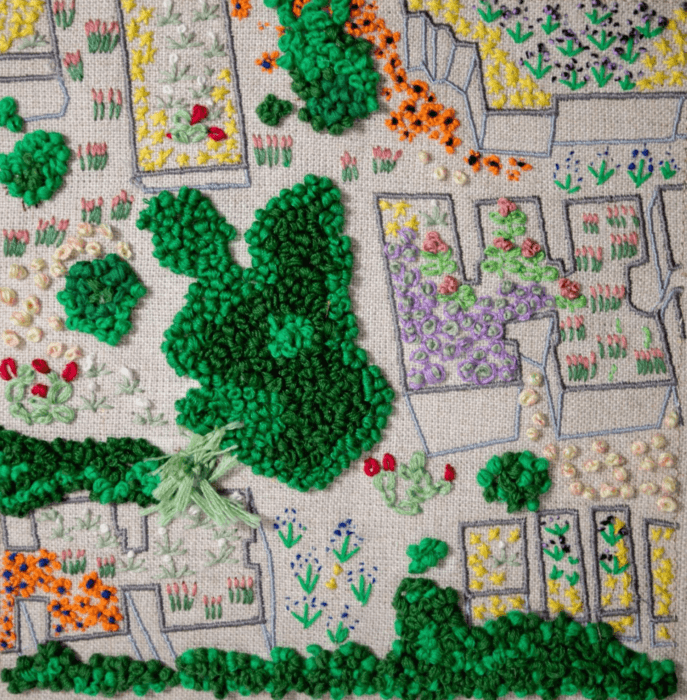
The concept for the crowd-sourced quilt was motivated by the vast, impermeable hardscape of big box stores, snarled roadways and concrete parking lots that flank Broadway from the Harlem River to Van Cortlandt Park. These buildings and roadways exacerbate flooding along this iconic thoroughfare built on land that was once a rich tidal estuary at the confluence of Tibbetts Brook and Spuyten Duyvil Creek.
Today, the hard surfaces of Broadway’s corridor exacerbate persistent flooding, especially with the advent of climate change which is causing more severe storms. The artists ask: What if there was a coordinated effort to create a mile-long collection of continuous green roofs, transforming this flat, gray expanse into an array of living habitats? It would cool the neighborhood, clean the air, provide habitat for plants, insects and birds, mitigate flooding events for generations. Beyond this, it would be beautiful.
The communal process of producing Tibbetts Estuary Tapestry was intended to ignite peoples’ imaginations and point to real opportunities for modest interventions that could collectively change the urban landscape in significant ways and make it more sustainable through greening and storm-water capture. The tapestry reflects Call’s mission to make sustainability tangible through the arts. Call was founded by artist Mary Miss in 2011 to address the daunting environmental problems now facing our rapidly changing planet.
Since 2017, Call has been working in the Bronx on Rescuing Tibbetts, an effort to build advocacy and public engagement around daylighting (bringing to the surface) Tibbetts Brook, whereby the buried stream will be uncovered to create a new linear park along an abandoned CSX railbed.
Tibbets Estuary Tapestry is generously supported by the Coby Foundation, the National Endowment for the Arts, New York State Council on the Arts, the Mellon Foundation, the New York
For more coverage, follow us on Twitter, Facebook and Instagram @bronxtimes

